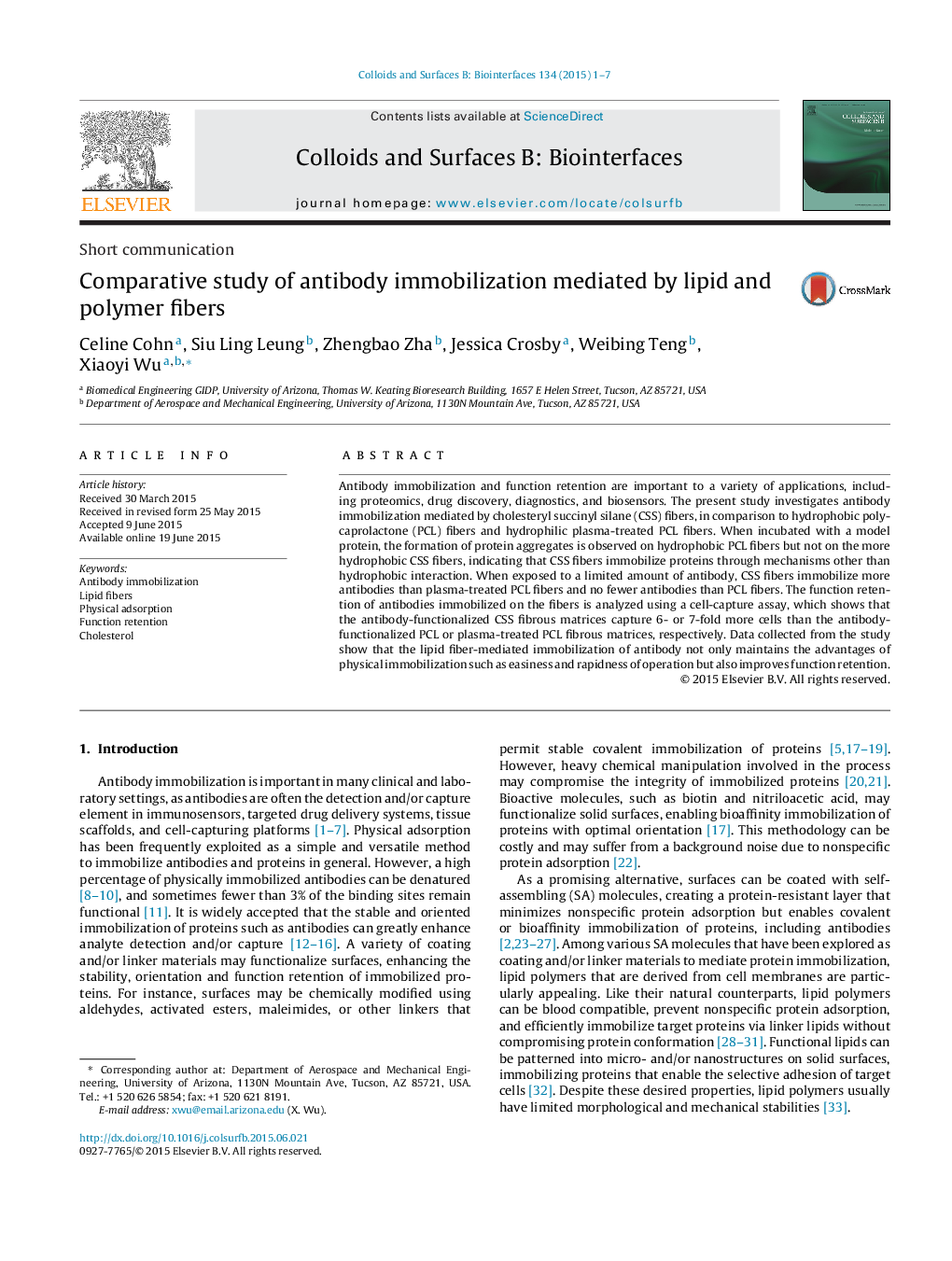| Article ID | Journal | Published Year | Pages | File Type |
|---|---|---|---|---|
| 599353 | Colloids and Surfaces B: Biointerfaces | 2015 | 7 Pages |
•Lipid fibers were made from electrospun cholesteryl succinyl silane (CSS).•The immobilization and retention of protein function were examined on CSS fibers.•Functionalized CSS matrices captured 7-fold more cells than hydrophobic matrices.•CSS maintains advantages of physical immobilization while improving protein function.
Antibody immobilization and function retention are important to a variety of applications, including proteomics, drug discovery, diagnostics, and biosensors. The present study investigates antibody immobilization mediated by cholesteryl succinyl silane (CSS) fibers, in comparison to hydrophobic polycaprolactone (PCL) fibers and hydrophilic plasma-treated PCL fibers. When incubated with a model protein, the formation of protein aggregates is observed on hydrophobic PCL fibers but not on the more hydrophobic CSS fibers, indicating that CSS fibers immobilize proteins through mechanisms other than hydrophobic interaction. When exposed to a limited amount of antibody, CSS fibers immobilize more antibodies than plasma-treated PCL fibers and no fewer antibodies than PCL fibers. The function retention of antibodies immobilized on the fibers is analyzed using a cell-capture assay, which shows that the antibody-functionalized CSS fibrous matrices capture 6- or 7-fold more cells than the antibody-functionalized PCL or plasma-treated PCL fibrous matrices, respectively. Data collected from the study show that the lipid fiber-mediated immobilization of antibody not only maintains the advantages of physical immobilization such as easiness and rapidness of operation but also improves function retention.
